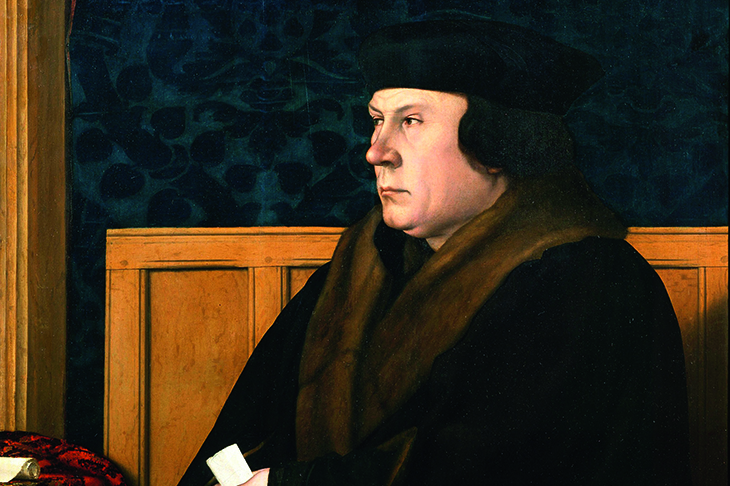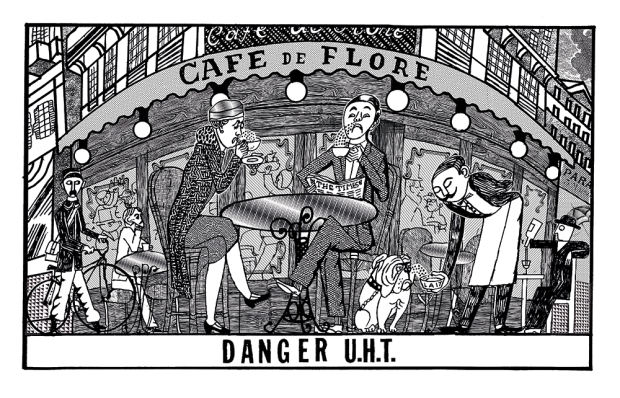One of the many pleasures of writing the life of Thomas Cromwell was to reach out behind the various versions of his life published in the past few years and glimpse the real man lost for so long: a complex, often admirable statesman who set England and Ireland and their successor-kingdom on to new paths.
From page one, the story needs rewriting. The great opening of Hilary Mantel’s modern-classic novel Wolf Hall is the boy Thomas reeling under blows from his father. This dark picture of the bad pub landlord Walter Cromwell is good fiction, but not history: in fact, it’s Victorian fantasy, cheekily made up by a 19th-century antiquary.
The few reliable elements of his Walter story were drawn from the Court Rolls of the Manor of Wimbledon, which do include charges against Thomas’s father of assault and falsifying deeds. However, court records are construed to be records of offences even when they are purely technical, aimed at triggering a judicial process to resolve a dispute: Walter was not the only Tudor yeoman to bear such a record. One consistent set of entries about him in the Court Rolls, no fewer than 48 instances between 1475 and 1501, are fines for breaking what was called ‘the assize of ale’. Historians assumed this revealed Walter’s penchant for regularly watering his ale. The very frequency of the fines should have aroused doubts: what we are seeing here is a routine system of licensing ale-selling, phrased in terms easy to mistake for a punitive fine in the modern sense.
Actually, the only mention of Walter in all Cromwell’s correspondence is a grateful reminiscence from a friend: ‘But for the goodness that I found in your father, and also in you in my Lord Cardinal [Wolsey] his days… I had been utterly undone.’
That brings us to Thomas’s first long-term encounter with high politics, in Thomas Wolsey’s service. He adored Wolsey, to the extent that after the cardinal’s fall he made a version of Wolsey’s coat of arms into his own heraldry: a brave and pointed thing to do when the late cardinal was a disgraced former minister. When Henry VIII dismissed Wolsey as Lord Chancellor, Cromwell did not desert him as so many did. He entered the king’s service without an official title, but in effect secretary ‘for Wolsey-related affairs’, doing his best to lessen the cardinal’s troubles.
That is a basis for rethinking Cromwell’s eight spectacular years in the king’s service. Historians right back to John Foxe in the 16th century have seen him as the firm ally of Henry’s second queen, Anne Boleyn, promoting the Reformation together. Contemporaries as well-informed as the Imperial Ambassador Eustace Chapuys said the same. Anne and Cromwell were indeed both enthusiasts for Protestant change, but we have to recognise the complicated reality of human relationships. Just because two people share an ideological conviction, they don’t necessarily like each other. If we peel back layers of hindsight, then a surprising story emerges. In the late 1520s, Anne grew to hate Cromwell’s beloved Wolsey, defining him as chief obstacle to her plans, and she was chief agent in ensuring Wolsey’s downfall in 1529-30. So when Cromwell adapted Wolsey’s heraldry, it was the most pointed and indiscreet gesture of defiance possible against the woman then soon to be Queen.
Cromwell was introduced to the king’s service by Wolsey’s friends and Anne’s enemies. There is no evidence at all of warmth between minister and queen, and she was probably responsible for slowing Cromwell’s further progress into royal service rather than furthering it in the early 1530s. His eventual lead in her disgrace and execution in 1536 is not surprising. Not only did Cromwell steer the moves, but they were dependent on him making quiet political overtures to the king’s daughter Mary. Again you might not expect that, seeing as this 20-year-old went on to be Catholic Queen Mary two decades later; but Thomas and Mary got on extremely well, and she was probably godmother to Cromwell’s grandson. Of course conservatives at court enthusiastically joined in Anne’s destruction in 1536 and had great hopes for its consequences, as did every Catholic in the land and beyond. Yet they were disappointed, and it was in the interest of later Protestant historians to smooth over the problematic relationship between the two heroes of early Protestant Reformation.
Equally unexpected is Cromwell’s nuanced role in destroying the monasteries. He did indeed start that off — but as the agent of Cardinal Wolsey, who dissolved monasteries to create two monster colleges in his own memory in Ipswich and Oxford. Once Thomas was in the king’s service in 1532 he carried out three or four specimen dissolutions of struggling monasteries, to see what the effect would be, but then put the project aside. In 1536, he argued against a sweeping dissolution of small monasteries because he knew from experience the trouble it would cause, but was overruled in the King’s Council.
Yet, as often in his defeats, Cromwell said ‘you win’, and took over the organisation. He was right about trouble, because what followed was the great rising known as the Pilgrimage of Grace, which nearly brought down the regime. More dissolutions followed in retaliation, and Cromwell took his share. But he also had a scheme to preserve some of the greatest monasteries as continuing corporations of priests, and although the king’s need for money drastically cut the plans down, eight magnificent abbeys were spared and turned into ‘colleges’. Five of these upgraded monasteries still survive as great churches in England, one being Westminster Abbey, the four others as cathedrals; monasteries that were also cathedrals were also remodelled. And somehow, none of Cromwell’s parliamentary legislation for the dissolution asserted that monasteries were automatically bad things.
That’s why the Anglican communion worldwide has been able to revive communities of monks, friars and nuns just like Roman Catholic religious orders. It is a perfect example of the most interesting aspect of Cromwell I discovered — his genius for improvisation, moving on and leaving situations open whenever possible or desirable. What I did not find was a pantomime villain.
Got something to add? Join the discussion and comment below.
Get 10 issues for just $10
Subscribe to The Spectator Australia today for the next 10 magazine issues, plus full online access, for just $10.
You might disagree with half of it, but you’ll enjoy reading all of it. Try your first month for free, then just $2 a week for the remainder of your first year.














Comments
Don't miss out
Join the conversation with other Spectator Australia readers. Subscribe to leave a comment.
SUBSCRIBEAlready a subscriber? Log in